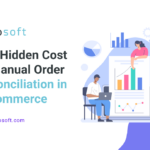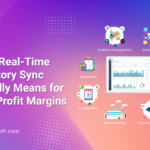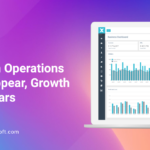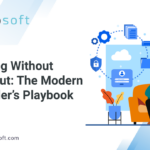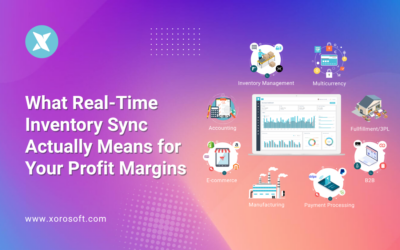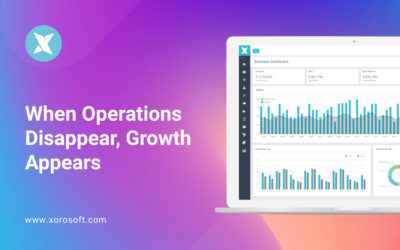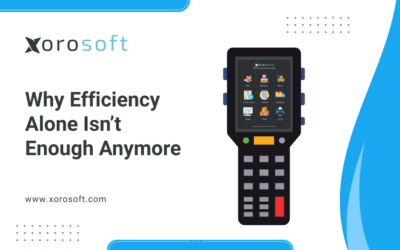
Introduction to Customer Self-Service Portals for ERP Systems
In today’s fast-paced business environment, customer self-service portals have become an essential tool for organizations using ERP systems. These portals empower customers to access and manage their accounts, place orders, track shipments, and resolve issues on their own, reducing the burden on customer service teams. However, to truly unlock the potential of customer self-service portals, it is crucial to measure their success. By tracking key metrics and analyzing user engagement, businesses can gain valuable insights into the effectiveness of their portals and make data-driven decisions to improve customer satisfaction and overall ERP system performance.
The Importance of Measuring Success in Customer Self-Service Portals
Measuring success in customer self-service portals is essential for several reasons. Firstly, it allows businesses to evaluate the ROI of their ERP system investment. By understanding the impact of the self-service portal on customer satisfaction and operational efficiency, organizations can justify the resources allocated to its development and maintenance. Secondly, measuring success helps identify any gaps or areas for improvement in the portal’s functionality and user experience. By tracking metrics, such as user adoption rates and task completion times, businesses can uncover pain points and implement enhancements to enhance customer satisfaction and streamline processes. Finally, measuring success enables organizations to compare their portal’s performance against industry benchmarks, ensuring they stay competitive and meet customer expectations.
Key Metrics to Measure Success in Customer Self-Service Portals
To effectively measure success in customer self-service portals, it is crucial to focus on key metrics that provide meaningful insights. Some essential metrics to consider include:
- User Adoption Rate: This metric measures the percentage of customers who actively use the self-service portal. A high adoption rate indicates that customers find value in the portal and are willing to utilize it for their needs.
- Task Completion Time: This metric tracks the average time it takes customers to complete common tasks within the portal, such as placing orders or requesting support. A shorter task completion time signifies a more efficient and user-friendly portal.
- Self-Service Deflection Rate: This metric measures the percentage of customer inquiries that are resolved through the self-service portal, without requiring assistance from customer service agents. A higher deflection rate indicates that the portal is effectively addressing customer needs.
- Customer Satisfaction Score (CSAT): CSAT measures the level of satisfaction customers have with the self-service portal. This metric can be obtained through post-interaction surveys or by analyzing customer feedback. A high CSAT score indicates that the portal is meeting customer expectations and providing a positive experience.
By tracking and analyzing these key metrics, businesses can gain a comprehensive understanding of the success and impact of their customer self-service portals.
How to Track and Analyze User Engagement in Customer Self-Service Portals
Tracking and analyzing user engagement is crucial to measure the success of customer self-service portals. Here are some effective ways to accomplish this:
- User Activity Logging: Implement a system that logs user activities within the portal. This can include tracking login/logout times, pages visited, actions taken, and time spent on each page. These logs provide valuable data for analyzing user engagement patterns and identifying areas for improvement.
- Heatmap Analysis: Use heatmap tools to visualize customer interactions within the portal. Heatmaps show where users click, scroll, and spend the most time, providing insights into which areas of the portal are most engaging and which may require attention.
- Conversion Funnel Analysis: Implement a conversion funnel to track the steps customers take within the self-service portal. By analyzing conversion rates at each stage of the funnel, businesses can identify bottlenecks or drop-off points and optimize the user journey for better engagement.
- A/B Testing: Conduct A/B tests to compare different design or functionality variations of the self-service portal. By measuring user engagement metrics, such as task completion rates or time spent, businesses can determine which version performs better and make data-driven decisions for optimization.
By leveraging these tracking and analysis techniques, businesses can gain valuable insights into user engagement and make informed decisions to improve their customer self-service portals.
Measuring the Impact of Customer Self-Service Portals on Customer Satisfaction
Customer satisfaction is a crucial indicator of the success of customer self-service portals. To measure this impact, businesses can employ various methods:
- Post-Interaction Surveys: Implement surveys immediately after customers interact with the self-service portal. These surveys can include questions about the ease of use, the effectiveness of the portal in addressing their needs, and their overall satisfaction. Analyzing survey responses provides valuable feedback on customer satisfaction levels.
- Net Promoter Score (NPS): NPS measures customer loyalty and the likelihood of recommending the self-service portal to others. By regularly assessing the NPS, businesses can track changes in customer sentiment and gauge the impact of the portal on customer satisfaction.
- Customer Feedback Analysis: Analyze customer feedback collected through various channels, such as support tickets, social media, or online reviews. Look for recurring themes or patterns to identify areas where the self-service portal can be improved to enhance customer satisfaction.
By incorporating these methods into the measurement strategy, businesses can gain insights into how customer self-service portals impact overall customer satisfaction.
The Role of Customer Feedback in Measuring Success in Customer Self-Service Portals
Customer feedback plays a crucial role in measuring the success of customer self-service portals. It provides valuable insights into customer needs, pain points, and areas for improvement. Here’s how businesses can effectively leverage customer feedback:
- Feedback Surveys: Implement feedback surveys within the self-service portal to gather input from customers. These surveys can include open-ended questions to encourage customers to provide detailed feedback on their experience. Analyzing survey responses helps identify areas where the portal excels and areas that require improvement.
- User Feedback Forums: Create user feedback forums or online communities where customers can share their experiences, ask questions, and provide suggestions for improvement. Actively engage with customers in these forums to demonstrate responsiveness and gather valuable feedback.
- Social Media Monitoring: Monitor social media platforms for mentions or discussions related to the self-service portal. Pay attention to both positive and negative feedback and take necessary actions to address customer concerns or highlight success stories.
By actively seeking and analyzing customer feedback, businesses can continuously improve their customer self-service portals and enhance customer satisfaction.
Best Practices for Measuring Success in Customer Self-Service Portals
To effectively measure success in customer self-service portals, it is essential to follow these best practices:
- Define Clear Goals and Objectives: Clearly define what success means for your self-service portal. Identify the key metrics that align with your goals and objectives.
- Establish Baseline Metrics: Before implementing any changes or enhancements, establish baseline metrics to measure progress accurately. This will help determine the impact of improvements made to the portal.
- Regularly Monitor and Analyze Metrics: Continuously monitor and analyze the selected metrics to track progress, identify trends, and uncover areas for improvement. Regularly review the metrics to ensure that the portal is meeting customer needs and aligning with organizational goals.
- Iterative Improvement: Use the insights gained from the metrics analysis to make iterative improvements to the portal. Implement enhancements based on user feedback, industry best practices, and data-driven decisions.
- Benchmark Against Industry Standards: Compare your portal’s performance against industry benchmarks to ensure that you are meeting or exceeding customer expectations. Identify areas where your portal may be falling short and implement strategies to close the gap.
By following these best practices, businesses can effectively measure and improve the success of their customer self-service portals.
Integrating Customer Self-Service Portal Data with Your ERP System
To maximize the value of customer self-service portal data, it is crucial to integrate it with your ERP system. By doing so, businesses can achieve a unified view of customer interactions and leverage this data for better decision-making. Here are some benefits of integrating customer self-service portal data with your ERP system:
- 360-Degree Customer View: Integrating portal data allows businesses to have a comprehensive view of customer interactions, including orders placed, support tickets raised, and self-service activities. This holistic view enhances customer service and enables personalized experiences.
- Improved Inventory Management: By integrating portal data with your ERP system’s inventory management module, businesses can gain real-time visibility into stock levels, order statuses, and shipment tracking. This integration improves operational efficiency and reduces the chances of stockouts or delayed deliveries.
- Streamlined Accounting Processes: Integrating portal data with the accounting module of your ERP system automates invoice generation, payment processing, and financial reporting. This streamlines accounting processes and reduces manual errors.
- Enhanced Reporting and Analytics: Integrating portal data with your ERP system’s reporting and analytics tools enables businesses to generate comprehensive reports and gain insights into customer behavior, trends, and preferences. This data-driven approach helps identify opportunities for growth and optimization.
By integrating customer self-service portal data with your ERP system, businesses can unlock the full potential of both systems and drive operational excellence.
Conclusion: Unlocking the Potential of Customer Self-Service Portals for Your ERP System
Customer self-service portals are powerful tools that can significantly enhance the user experience and operational efficiency of ERP systems. By measuring success through key metrics, tracking user engagement, and analyzing customer feedback, businesses can continuously improve their portals and drive customer satisfaction. The case study of Xorosoft ERP demonstrates the positive impact of measuring success in customer self-service portals. By following best practices and integrating portal data with the ERP system, businesses can unlock the full potential of these portals and achieve a competitive edge. So, don’t miss out on the opportunity to leverage customer self-service portals for your ERP system. Book a demo with Xorosoft today and discover how their ERP solution, including a robust customer self-service portal, can revolutionize your business operations.

